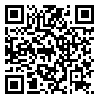BibTeX | RIS | EndNote | Medlars | ProCite | Reference Manager | RefWorks
Send citation to:
URL: http://jdisabilstud.org/article-1-3526-fa.html

 ، سوگند قاسم زاده*2
، سوگند قاسم زاده*2 
 ، طاهره صادقیه3
، طاهره صادقیه3 
 ، غلامعلی افروز4
، غلامعلی افروز4 

2- دانشیار گروه روانشناسی و آموزش کودکان استثنایی، دانشکدهٔ روانشناسی و علوم تربیتی، دانشگاه تهران، ایران
3- استادیار گروه روانپزشکی کودک و نوجوان، دانشگاه علومپزشکی یزد، یزد، ایران
4- استادممتاز گروه روانشناسی و آموزش کودکان استثنایی، دانشکدهٔ روانشناسی و علوم تربیتی، دانشگاه تهران، ایران
چکیده
زمینه و هدف: لکنت، اختلالی چندوجهی و بسیار پیچیدهٔ روانیحرکتی است که در جریان طبیعی گفتار فرد روی میدهد و تغییرات رفتاری، عاطفی، اجتماعی و نگرشی متفاوتی را بههمراه دارد؛ لذا، ارزیابی تغییرات بهوجودآمده، جنبهای اصلی و حیاتی در درمان این اختلال بهشمار میرود. پژوهش حاضر باهدف بررسی مؤلفههای شناختی و زبانی آزمون کالمز در دانشآموزان ۷تا۱۴سالهٔ دارای لکنت انجام شد.
روشبررسی: این پژوهش، مطالعهای تحلیلی و بهصورت مقطعی بود. جامعهٔ آماری پژوهش را تمامی کودکان دبستانی دارای لکنت ۷تا۱۴سالهٔ شهر یزد در سال تحصیلی ۹۹-۱۳۹۸ تشکیل دادند. نمونه شامل ۷۴ دانشآموز ۷تا۱۴ساله بود که بهشیوهٔ نمونهگیری دردسترس از مراکز گفتاردرمانی شهر یزد در سال ۱۳۹۹ انتخاب شدند. برای جمعآوری دادهها، آزمون کالمز (حاوی مؤلفههای شناختی، عاطفی، زبانی، حرکتی، خانوادگی و اجتماعی کودکان مدرسهرو) (هیلی، ۲۰۱۲) و فرم اطلاعات جمعیتشناختی بهکار رفت. در این پژوهش مؤلفههای شناختی و زبانی آزمون کالمز بررسی شد. برای تحلیل دادهها ضریب همبستگی پیرسون، تی مستقل و تحلیل واریانس یکطرفه بهکمک نرم افزار SPSS نسخۀ ۲۳ بهکار رفت. سطح معناداری آزمونهای آماری ۰٫۰۵ بود.
یافتهها: نتایج نشان داد، بین نمرهٔ کل مؤلفهٔ شناختی و سن در دانشآموزان دارای لکنت، رابطهٔ معنادار و مثبت وجود داشت (۰٫۰۵>p)؛ بهعلاوه میان نمرهٔ کل مؤلفهٔ زبانی و زمان تشخیص وجود لکنت رابطهٔ معنادار و منفی مشاهده شد (۰٫۰۵>p)؛ همچنین میان دختران و پسران دارای لکنت در مؤلفهٔ زبانی تفاوت معناداری وجود داشت (۰٫۰۲۱=p)؛ اما در مؤلفهٔ شناختی تفاوت معناداری دیده نشد (۰٫۸۱۰=p)؛ افزونبراین تفاوت معناداری میان مؤلفههای شناختی (۰٫۸۲۳=p) و زبانی (۰٫۶۴۱=p) مقیاس کالمز در دانشآموزان دارای لکنت بهتفکیک پایههای تحصیلی وجود نداشت.
نتیجهگیری: ارزیابی مؤلفههای شناختی و زبانی افراد دارای لکنت مشخص کرد، برای اثربخشی بیشتر و مؤثرتر درمانهای مربوط به آن، باید مداخله در سنین کم صورت پذیرد؛ درواقع سن تشخیص و نیز زمان مداخله میتواند از اهمیت دوچندانی برخوردار باشد؛ البته دراینراستا توجه به جنسیت فرد دارای لکنت نیز حائز اهمیت است.
| بازنشر اطلاعات | |
 |
این مقاله تحت شرایط Creative Commons Attribution-NonCommercial 4.0 International License قابل بازنشر است. |


